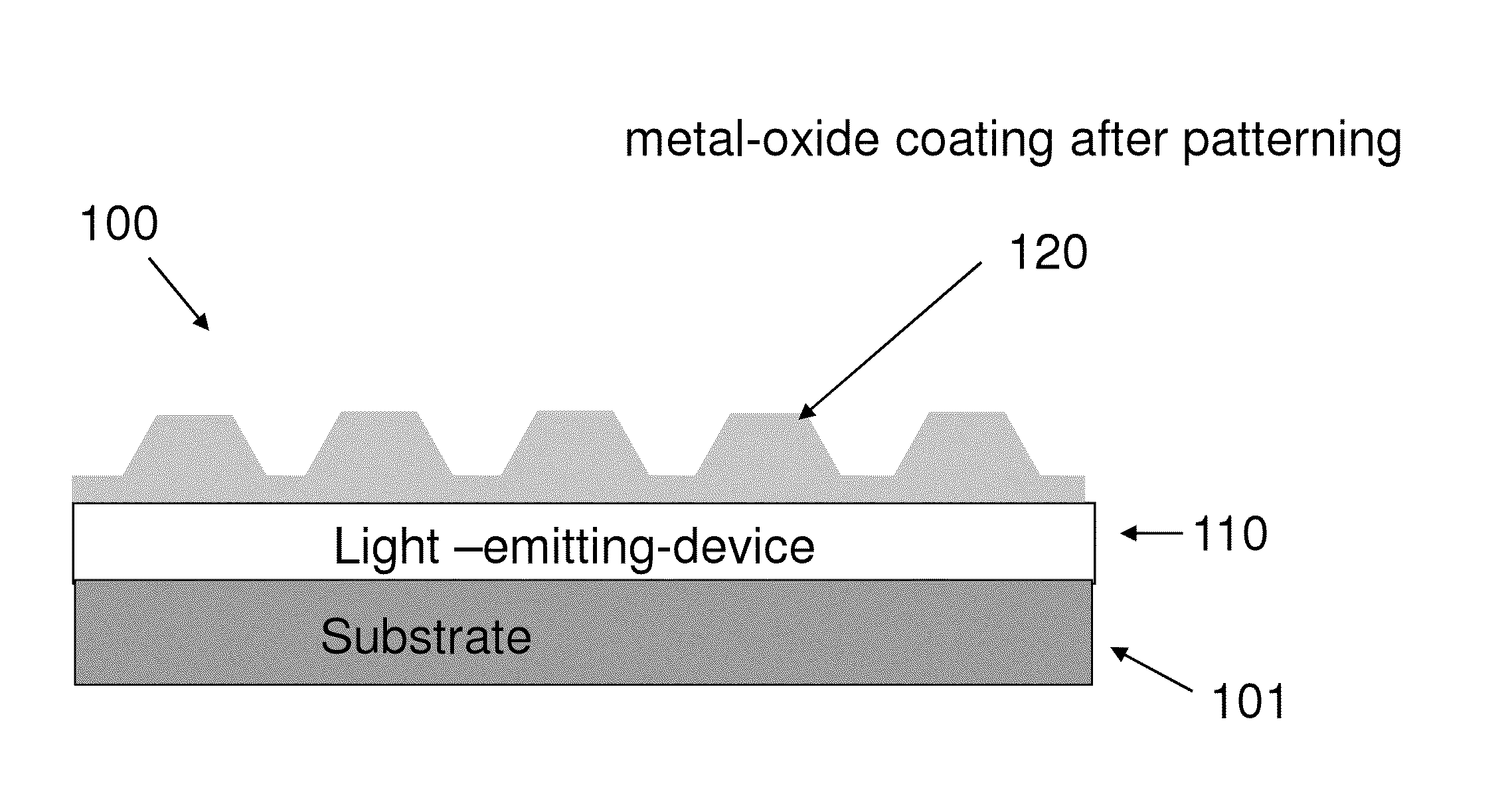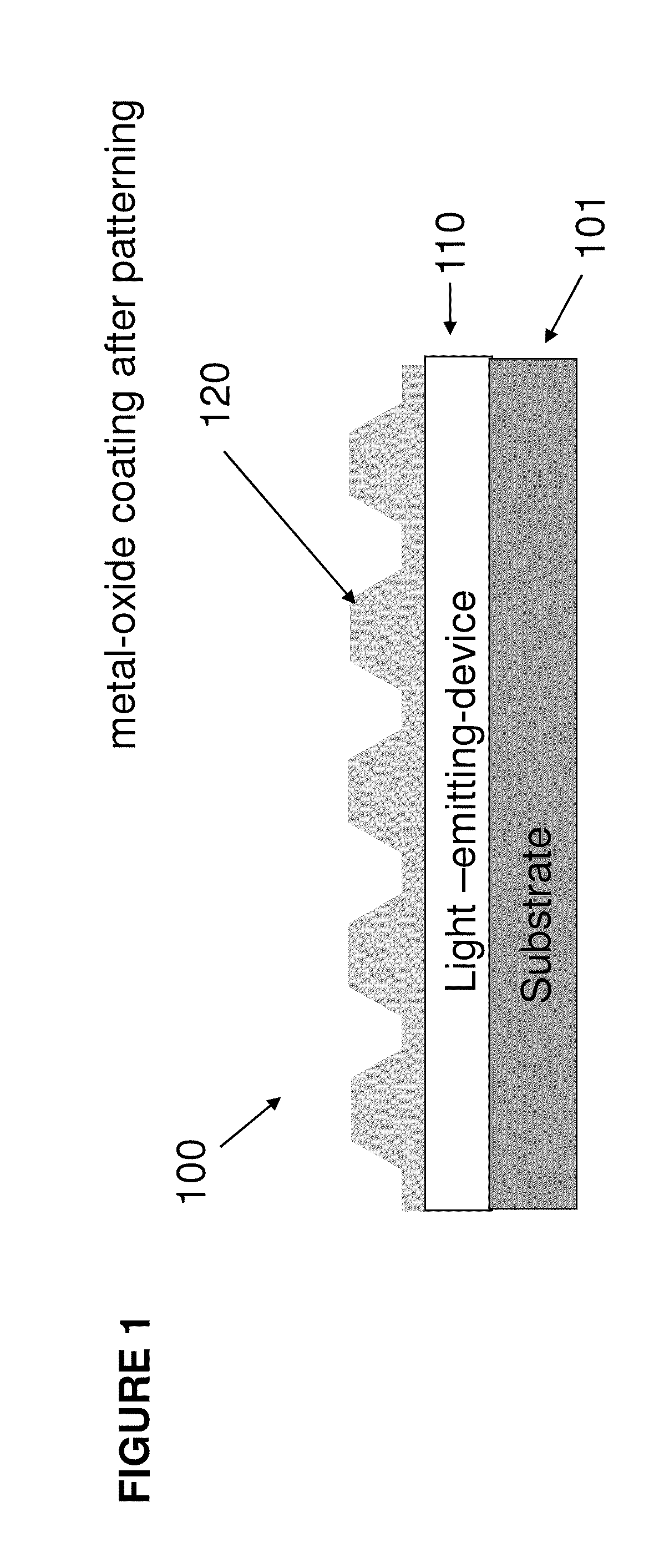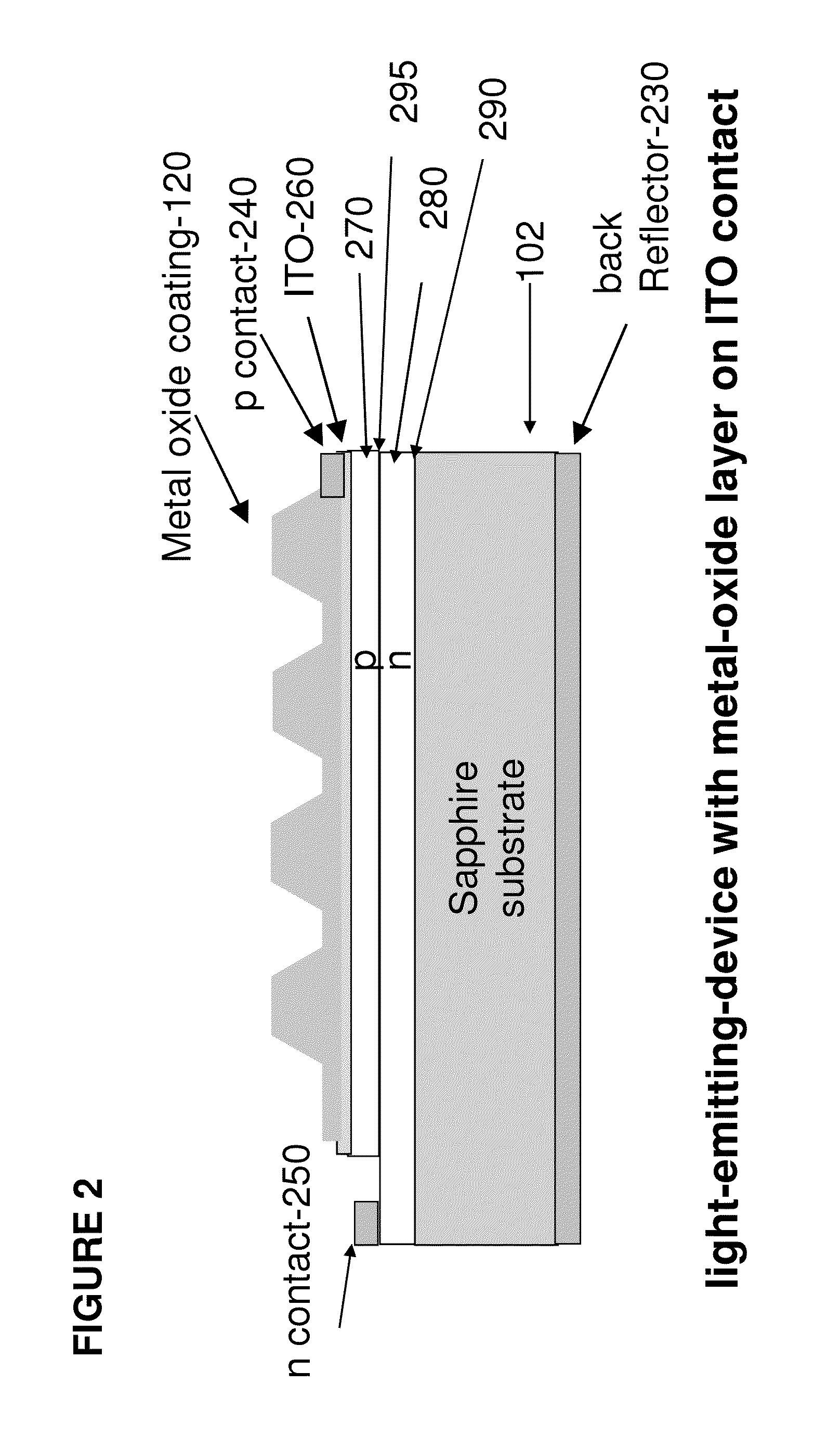Light emitter with metal-oxide coating
a technology of metal oxide coating and light emitter, which is applied in the direction of basic electric elements, electrical equipment, semiconductor devices, etc., can solve the problems of limited efficiency of leds, increased chance of reabsorption and loss, and significant absorption loss of conventional leds, so as to enhance the light output
- Summary
- Abstract
- Description
- Claims
- Application Information
AI Technical Summary
Benefits of technology
Problems solved by technology
Method used
Image
Examples
Embodiment Construction
[0020]FIG. 1 shows a schematic view of one embodiment of the invented light emitting structure 100 comprising a substrate portion 101, a light emitting device portion 110 and a metal-oxide coating portion 120. As used herein a substrate or submount portion provides at least a mechanical support for a light emitting device portion and metal-oxide coating portion. A substrate is chosen from a group comprising Al2O3, Si, SiC, AlInGaN based materials, metals, ceramics and glasses; these materials may be single crystal or not. A submount is chosen based on manufacturing convenience; typically a submount is chosen from a group comprising Al2O3, Si, SiC, metals, ceramics, plastics and glasses. As used herein a light emitting device portion is chosen from a group comprising light emitting diodes, light emitting heterojunctions, light emitting quantum well structures and other solid state devices capable of emitting light. As used herein a metal-oxide coating portion is chosen from a group c...
PUM
| Property | Measurement | Unit |
|---|---|---|
| thickness | aaaaa | aaaaa |
| thickness | aaaaa | aaaaa |
| index of refraction | aaaaa | aaaaa |
Abstract
Description
Claims
Application Information
 Login to View More
Login to View More - R&D
- Intellectual Property
- Life Sciences
- Materials
- Tech Scout
- Unparalleled Data Quality
- Higher Quality Content
- 60% Fewer Hallucinations
Browse by: Latest US Patents, China's latest patents, Technical Efficacy Thesaurus, Application Domain, Technology Topic, Popular Technical Reports.
© 2025 PatSnap. All rights reserved.Legal|Privacy policy|Modern Slavery Act Transparency Statement|Sitemap|About US| Contact US: help@patsnap.com



